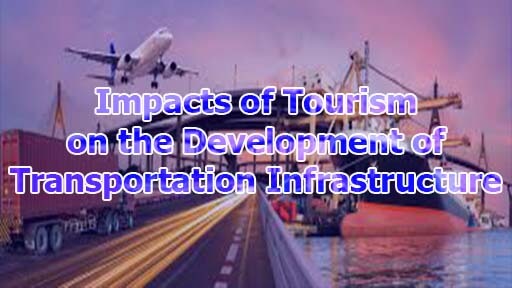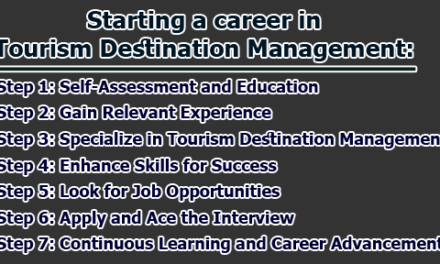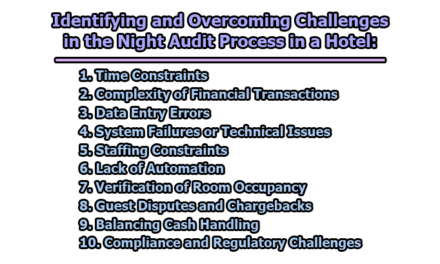Impacts of Tourism on the Development of Transportation Infrastructure:
Tourism is an important economic sector for many countries, providing significant revenue and employment opportunities. Tourism is also a major contributor to the development of transportation infrastructure, as it creates a demand for improved transportation services and facilities. Transportation infrastructure plays a critical role in the success of tourism, and the two industries are closely linked. In this article, we will examine the impacts of tourism on transportation infrastructure development, both positive and negative, and discuss strategies for sustainable tourism development and transportation infrastructure.
Positive Impacts of Tourism on Transportation Infrastructure Development:
Tourism has been known to have significant positive impacts on the development of transportation infrastructure. Some of the positive impacts include:
- Increased Investment: Tourism has been known to increase the level of investment in transportation infrastructure. Governments and private entities are often motivated to invest in transportation infrastructure when they anticipate increased tourist arrivals. This investment can take various forms, including the development of new airports, railway lines, highways, and public transportation systems.
- Improved Access: Tourism often leads to the improvement of access to various destinations, especially in areas that were previously inaccessible. For instance, the development of airports and new highways has opened up previously remote destinations, making them more accessible to tourists. This improvement in access has also led to an increase in economic activities in these previously remote areas.
- Better Transportation Services: The increase in tourism has led to the development of better transportation services. Tourists demand better quality services, and this often leads to improvements in the quality of transportation services offered. For instance, bus and train companies may introduce more comfortable seats, air conditioning, and other amenities to attract more tourists.
- Job Creation: Tourism has been known to create jobs in the transportation sector. As the number of tourists increases, there is often a need for more transportation services to meet the demand. This increased demand for transportation services can lead to the creation of new jobs in the transportation sector.
- Increased Revenue: The development of transportation infrastructure often leads to an increase in revenue for the government and private entities. For instance, the development of new airports, railway lines, and highways can lead to an increase in revenue from taxes, tolls, and other fees. This revenue can then be reinvested in the development of more transportation infrastructure or used to fund other projects.
- Improved Connectivity: The development of transportation infrastructure often leads to improved connectivity between various destinations. This improved connectivity can lead to the development of new tourist circuits and the opening up of previously unexplored destinations. Improved connectivity also allows tourists to visit more destinations within a shorter period, thus increasing their spending and boosting the local economy.
- Promotion of Sustainable Transportation: The development of transportation infrastructure for tourism can also lead to the promotion of sustainable transportation. For instance, the use of electric vehicles, bicycles, and other forms of sustainable transportation can be promoted in tourist destinations. This can lead to a reduction in carbon emissions and other negative impacts associated with transportation.
- Encouragement of Innovation: The demand for transportation services by tourists can also encourage innovation in the transportation industry. For instance, the need for faster, more comfortable, and more efficient transportation services can lead to the development of new technologies such as high-speed trains, automated cars, and other transportation innovations. This, in turn, can spur further investment in transportation infrastructure.
- Increased Collaboration: The development of transportation infrastructure for tourism often requires collaboration between various stakeholders, including government entities, private companies, and local communities. This collaboration can lead to the creation of partnerships and networks that promote sustainable transportation solutions and community involvement in the development and management of transportation infrastructure.
- Promotion of Cultural Exchange: The development of transportation infrastructure for tourism can also promote cultural exchange between different regions and countries. Improved transportation infrastructure can make it easier for tourists to visit cultural and historical sites, attend festivals and events, and interact with local communities. This can lead to the preservation and promotion of cultural heritage and diversity, and foster mutual understanding and respect between different cultures.
- Development of New Transportation Modes: Tourism can also drive the development of new transportation modes. For example, the development of new airports or train stations can help to increase the accessibility of a destination and attract more tourists. The development of new transportation modes can also help to reduce travel times and improve the overall tourist experience.
Negative Impacts of Tourism on Transportation Infrastructure Development:
While tourism can have positive impacts on transportation infrastructure development, there are also negative impacts that should be considered. Some of the negative impacts of tourism on transportation infrastructure development include:
- Overcrowding and Congestion: One of the negative impacts of tourism on transportation infrastructure development is the overcrowding and congestion that can result from increased tourist arrivals. This can put a strain on transportation infrastructure, leading to traffic congestion, long wait times, and increased travel times. Overcrowding can also lead to safety concerns, as crowded trains, buses, and airports can be breeding grounds for accidents and incidents.
- Environmental Degradation: The development of transportation infrastructure for tourism can also lead to environmental degradation. The construction of new highways, airports, and other transportation facilities can have a significant impact on natural habitats and wildlife, leading to habitat loss, fragmentation, and degradation. Increased transportation activity can also lead to an increase in air and noise pollution, which can have negative health impacts on both humans and wildlife.
- Increased Carbon Emissions: The transportation sector is a significant contributor to greenhouse gas emissions, and the development of transportation infrastructure for tourism can contribute to increased carbon emissions. This is because the increased demand for transportation services often leads to an increase in the number of vehicles on the road, which in turn leads to increased fuel consumption and emissions.
- Pressure on Local Resources: The development of transportation infrastructure for tourism can also put pressure on local resources, such as water, energy, and land. This is because transportation infrastructure requires large amounts of resources for construction, operation, and maintenance. Increased tourism can also lead to an increase in demand for these resources, putting pressure on local communities and ecosystems.
- Displacement of Local Communities: The development of transportation infrastructure for tourism can also lead to the displacement of local communities. This is because the construction of new transportation infrastructure often requires the acquisition of land, which can result in the displacement of local communities and the loss of their livelihoods. This can also lead to the loss of cultural heritage and traditional knowledge.
- Unequal Distribution of Benefits: The benefits of tourism-related transportation infrastructure development are not always distributed equally among stakeholders. For instance, large corporations may benefit more than local communities, which can lead to social and economic inequalities. This can also lead to resentment and conflicts between different stakeholders.
Case Studies on the Impacts of Tourism on Transportation Infrastructure Development:
There are several case studies that illustrate the impacts of tourism on transportation infrastructure development. Here are three examples:
1. Bali, Indonesia: Bali is a popular tourist destination in Indonesia, known for its beautiful beaches, cultural heritage, and natural attractions. The island has experienced rapid tourism growth in recent years, which has put a strain on its transportation infrastructure. To address this, the government of Indonesia has invested in the development of new transportation infrastructure, including a new airport, highways, and mass transit systems.
The development of transportation infrastructure in Bali has had both positive and negative impacts. On the positive side, it has improved access to tourist destinations and boosted the local economy. The new airport has made it easier for tourists to travel to Bali, while the mass transit system has helped to reduce traffic congestion and pollution. On the negative side, the construction of new transportation infrastructure has had negative impacts on the environment, including the destruction of natural habitats and the displacement of local communities.
2. Machu Picchu, Peru: Machu Picchu is a popular tourist attraction in Peru, known for its ancient ruins and stunning mountain views. The site has experienced a significant increase in tourist arrivals in recent years, which has put a strain on its transportation infrastructure. To address this, the government of Peru has invested in the development of new transportation infrastructure, including a new airport and train system.
The development of transportation infrastructure in Machu Picchu has had both positive and negative impacts. On the positive side, it has improved access to the site and boosted the local economy. The new airport and train system have made it easier for tourists to travel to Machu Picchu, while also providing job opportunities for local residents. On the negative side, the construction of new transportation infrastructure has had negative impacts on the environment, including the destruction of natural habitats and the displacement of local communities.
3. Barcelona, Spain: Barcelona is a popular tourist destination in Spain, known for its art, architecture, and cultural attractions. The city has experienced rapid tourism growth in recent years, which has put a strain on its transportation infrastructure. To address this, the government of Spain has invested in the development of new transportation infrastructure, including a new high-speed train line and a new metro system.
The development of transportation infrastructure in Barcelona has had both positive and negative impacts. On the positive side, it has improved access to tourist destinations and boosted the local economy. The new high-speed train line and metro system have made it easier for tourists to travel to Barcelona, while also providing job opportunities for local residents. On the negative side, the construction of new transportation infrastructure has had negative impacts on the environment, including the destruction of natural habitats and the displacement of local communities.
Strategies for Sustainable Tourism Development and Transportation Infrastructure:
As the tourism industry continues to grow, there is an increasing need to ensure that tourism development and transportation infrastructure are sustainable. Sustainable tourism development and transportation infrastructure aim to balance economic, social, and environmental factors, ensuring that tourism development and transportation infrastructure meet the needs of present and future generations. Here are some strategies for achieving sustainable tourism development and transportation infrastructure:
- Encouraging the Use of Public Transportation: Public transportation is often a more sustainable option than private transportation, as it can reduce traffic congestion, air pollution, and carbon emissions. Governments and transportation providers can encourage the use of public transportation by offering discounts or incentives for tourists who use public transportation, and by investing in the development of new public transportation systems.
- Implementation of Smart Transportation Systems: Smart transportation systems use technology to optimize transportation systems and reduce their environmental impact. This can include the use of electric vehicles, bike-sharing programs, and traffic management systems. Smart transportation systems can also improve the overall tourist experience by reducing travel times and improving the reliability of transportation services.
- Develop Green Infrastructure: Green infrastructure refers to the use of natural or semi-natural features, such as wetlands, forests, and green roofs, to provide environmental and social benefits. Green infrastructure can help reduce the environmental impact of tourism development and transportation infrastructure by providing ecosystem services such as water filtration, carbon sequestration, and air quality improvement. Additionally, it can provide recreational opportunities for visitors and improve the quality of life for local residents.
- Promote Sustainable Accommodations: Sustainable accommodations, such as eco-hotels, can help reduce the environmental impact of tourism by implementing sustainable practices such as energy and water conservation, waste reduction, and the use of renewable energy. Local governments and tourism organizations can work with accommodations providers to promote sustainable practices and provide incentives for sustainability initiatives. Additionally, tourists can be encouraged to choose sustainable accommodations by providing information and promoting eco-certifications.
- Promotion of Alternative Transportation Modes: Promote alternative transportation modes, such as walking or cycling. This can help to reduce traffic congestion and carbon emissions, and also promote healthy and active lifestyles. Governments and transportation providers can promote alternative transportation modes by investing in the development of new pedestrian and bike paths, and by offering discounts or incentives for tourists who use alternative transportation modes.
- Engage Local Communities: Engaging local communities in tourism development and transportation infrastructure planning can help ensure that the development meets the needs and aspirations of local residents. It can also help reduce the negative impacts of tourism on the environment and local culture. Local governments and tourism organizations can work with local communities to identify their needs and aspirations and incorporate them into tourism development and transportation infrastructure planning. Additionally, engaging local communities in sustainable tourism development can help create local employment opportunities and promote the conservation of natural and cultural resources.
- Monitor and Evaluate: Monitoring and evaluating tourism development and transportation infrastructure can help ensure that sustainable development goals are being met. Monitoring can help identify potential negative impacts of tourism development and transportation infrastructure and allow for the implementation of corrective measures. Evaluating can help determine the effectiveness of sustainable tourism development and transportation infrastructure strategies and inform future planning decisions.
- Collaboration between Tourism Stakeholders and Transportation Authorities: Finally, sustainable tourism development and transportation infrastructure require collaboration between tourism stakeholders and transportation authorities. Governments, transportation providers, and tourism stakeholders should work together to develop transportation systems that meet the needs of tourists while also promoting sustainability and minimizing negative impacts. Collaboration can also help to ensure that local communities are involved in the decision-making process and that their needs are taken into account.
From the above discussion, we can say that tourism plays a significant role in the development of transportation infrastructure, both positively and negatively. While tourism can drive improvements in transportation services and facilities, it can also lead to overcrowding, environmental degradation, and negative impacts on local communities. Sustainable tourism development and transportation infrastructure require collaboration between tourism stakeholders and transportation authorities, and the implementation of strategies that promote sustainable transportation options and reduce negative impacts. By working together, we can ensure that tourism and transportation infrastructure continue to support economic growth, while also promoting sustainability and minimizing negative impacts.
References:
- Asgary, A., & Malekafzali, H. (2015). Impacts of tourism on transportation systems. Journal of Tourism and Hospitality Management, 3(2), 33-41.
- Asuncion, J. V., & Thompson, M. (2017). Sustainable tourism development and the environment: the case of Boracay Island, Philippines. Journal of Cleaner Production, 156, 364-377.
- Black, R., & Cooper, C. (2013). The impact of tourism on transport infrastructure development in emerging destinations. Journal of Hospitality and Tourism Management, 20, 17-26.
- Camilleri, M. A. (2019). Tourism planning and destination marketing. Routledge.
- Chu, H. C., Lee, M. C., & Tsai, Y. F. (2019). The effect of tourism transportation infrastructure on tourism development: A spatial analysis approach. Tourism Management, 70, 238-249.
- Colantonio, A., & Dixon, T. (2011). Urban regeneration and social sustainability: Best practice from European cities. John Wiley & Sons.
- Cooper, C., & Hall, C. M. (2012). Contemporary tourism: An international approach. Routledge.
- Del Chiappa, G., & Baggio, R. (2015). The impact of transport infrastructure on tourism: Empirical evidence from Sardinia, Italy. Journal of Transport Geography, 43, 78-88.
- Dwyer, L., & Forsyth, P. (2019). International handbook on tourism and peace. Edward Elgar Publishing.
- Gursoy, D., Jurowski, C., & Uysal, M. (2002). Resident attitudes: A structural modeling approach. Annals of Tourism Research, 29(1), 79-105.
- Hall, C. M., & Page, S. J. (2019). Tourism and innovation. Routledge.
- Hall, C. M., & Williams, A. M. (2018). Tourism and innovation. Routledge.
- Huijbens, E. H. (2018). The use of cultural and natural heritage in sustainable tourism development. Journal of Heritage Tourism, 13(4), 311-325.
- Kim, H., & Richardson, L. D. (2003). Motion and emotion: Tourism in conflict zones. Annals of Tourism Research, 30(2), 354-377.
- (2018). Travel & Tourism: Economic impact 2018. World Travel & Tourism Council.
- Leiper, N. (2018). Tourism management. Routledge.
- Mason, P. (2015). Tourism impacts, planning, and management. Routledge.
- McIntyre, G., & Hetherington, S. (2015). Tourism and transport: Modes, networks, and flows. Channel View Publications.
- Mowforth, M., & Munt, I. (2015). Tourism and sustainability: Development, globalization and new tourism in the third world. Routledge.
- Murphy, P. E. (1985). Tourism: A community approach. Routledge.
- Page, S. J., & Connell, J. (2014). Tourism: A modern synthesis. Cengage Learning.
- Prideaux, B. (2005). Sustainable tourism: An Australian perspective. CABI.
- Ritchie, J. R., & Crouch, G. I. (2003). The competitive destination: A sustainable tourism perspective. CABI Publishing.
- Scott, N., Hall, C. M., & Gössling, S. (2015). Tourism and water: Interactions, impacts, and challenges. Channel View Publications.
- Sharpley, R. (2014). Host perceptions of tourism: A review of the research. Tourism Management, 42, 37-49.
- Sharpley, R. (2016). Tourism and development in the developing world. Routledge.
- Tapper, R. (2017). Tourism and development: Concepts and issues. Channel View Publications.
- (2019). Tourism Highlights 2019 Edition. World Tourism Organization.
- (2020). Tourism and COVID-19. World Tourism Organization.
- Weaver, D. B., & Lawton, L. J. (2014). Tourism management. John Wiley & Sons.

Assistant Teacher at Zinzira Pir Mohammad Pilot School and College










